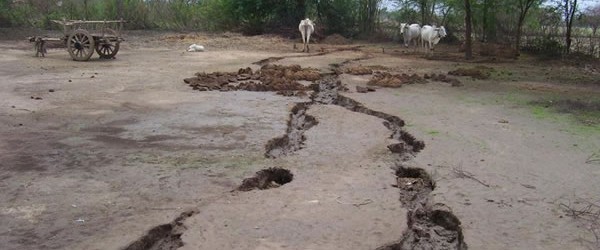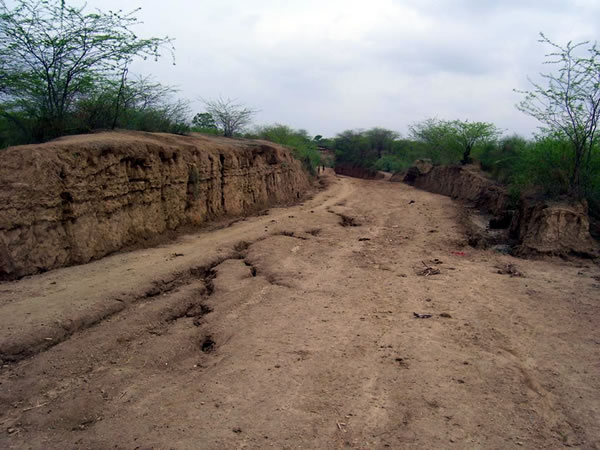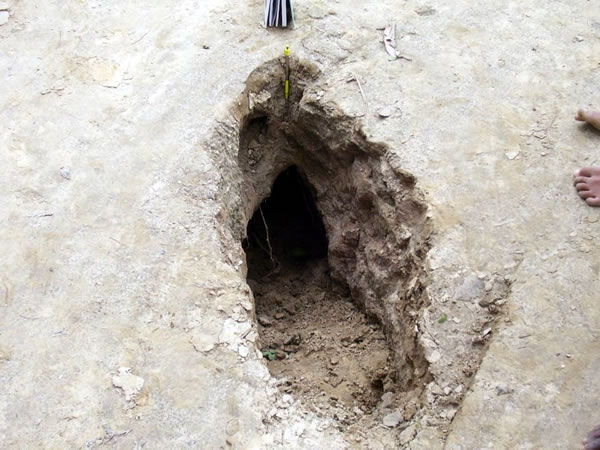June 24, 2011

Indian scientist in the United States has cautioned that mysterious long widespread cracks observed in several places in the Indo-Gangetic plains could be due to motion of a massive granitic body underneath. Ramesh Singh, who had extensively studied the seismology in that region, said in a statement as concern mounted over cracks being formed in several districts of Uttar Pradesh.
“It is my sincere appeal to the government of India to monitor seismic activities in the area before any major disaster takes place.” Ramesh Singh said.”If the orientations of such long cracks are in the east-west direction, then the cracks could be due to stress on the surface of the earth due to motion of this massive craton (granitic body) which is exposed near Jhansi.”
Singh, who was a senior professor at the Indian Institute of Technology Kanpur (IIT-K), is now professor at George Mason University in Washington and vice chair of GeoRisk Commission of the International Union of Geodesy and Geophysics. He said he and his colleagues at IIT-K had studied the configuration of this craton in 1990 using magnetotelluric method.
This massive body underlying the region is inclined towards northeast with depth reaching 300-500 m near Kanpur and 1,200 m in Lucknow.
“If this granitic craton motion is changed due to some tectonic reason, one may see subsidences at large scale and since a fault is present along Kanpur-Lucknow; there could be danger of large surface deformation,” Singh cautioned.
The effect of motion of this block will be reflected in widespread cracks. Its slow deformation may also have led to seismic tremors which may not be noticed by human population.
 Soil profile showing different layers, crack along village road, Sikrodhi, Hamirpur district, UttarPradesh
Soil profile showing different layers, crack along village road, Sikrodhi, Hamirpur district, UttarPradeshAbout 18 months back, scientists observed a shift in the position of the Sangam (the confluence of rivers Ganges and Yamuna and mythical Saraswati near Allahabad) and thought it was due to the sediment load in the rivers or due to plate motion.

No comments:
Post a Comment